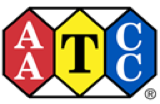 RESEARCH TRIANGLE PARK, N.C. — April 29, 2024 — AATCC currently sells Blue Wool Lightfastness Standard fabric for measuring increments of 5 and 20 AFU. Staff and committee members are also working on the development of new fabrics to measure longer exposure, particularly for evaluating outdoor and automotive fabrics. Join the RA50 Lightfastness and Weathering Test Methods committee meeting for the latest updates and opportunities to participate in the study. AATCC research committee meetings are open to all.
RESEARCH TRIANGLE PARK, N.C. — April 29, 2024 — AATCC currently sells Blue Wool Lightfastness Standard fabric for measuring increments of 5 and 20 AFU. Staff and committee members are also working on the development of new fabrics to measure longer exposure, particularly for evaluating outdoor and automotive fabrics. Join the RA50 Lightfastness and Weathering Test Methods committee meeting for the latest updates and opportunities to participate in the study. AATCC research committee meetings are open to all.
Attend AATCC RA50 Meeting
May 8; 1:00-1:40 pm (ET)
UL University, RTP, NC, USA | Virtual
www.aatcc.org/research
The current 5 and 20 AFU standards are equivalent to standards commonly referred to as L2 and L4. The same fabric is used for both intervals, with two different end points. The table below is a helpful tool for understanding AATCC lightfastness standard designations.
| Test Duration | May Also Be Called | End Point |
| 5 AFU | “L2 test” | Matches 5-AFU Standard of Fade OR Gray Scale for Color Change Grade 4 |
| 10 AFU | “L3 test” | 2 cycles as for 5 AFU |
| 20 AFU | “L4 test” | Matches 20-AFU Standard of Fade OR Gray Scale for Color Change Grade 2.5 |
| 40 AFU | “L5 test” | 2 cycles as for 20 AFU |
| 80 AFU | “L6 test” | 4 cycles as for 20 AFU |
Purchase AATCC Blue Wool Lightfastness Standards
Item #38362C
https://members.aatcc.org/store/bluewool-1/3816/
Test Duration
Lightfastness testing involves exposing a material to a specified amount of light, then measuring the change in color or other properties of the material. The correct unit for measuring exposure is AATCC Fading Units (AFU).
As it is difficult or impossible to control variables such as weather/latitude for outdoor tests and quality of power source for indoor tests, light exposure is not measured in hours or days. (An hour of exposure on a cloudy day is obviously not the same as an hour of exposure on a sunny day.) AFU is a consistent measure of exposure.
AFU are independent of time. Exposure to 20 AFU is NOT the same as exposure for 20 hours and may take a different amount of time in different machines or under different conditions.
The L-designations in the table above are for reference only. Test duration should always be stated in AFU. L-designations indicate the AATCC Blue Wool Lightfastness Standard historically used to determine when the specified AFU exposure occurs.
End Point
For each test, three specimens of the AATCC Lightfastness Standard are exposed along with test specimens. When the Lightfastness Standard reaches the 5-AFU endpoint (Gray Scale Grade 4), all specimens have been exposed to 5 AFU light. When the Lightfastness Standard reaches the 20-AFU endpoint (Gray Scale Grade 2.5), all specimens have been exposed to 20 AFU. There are two ways to determine the endpoint for a lightfastness test. Both use the AATCC Lightfastness Standard.
The first option is to compare exposed AATCC Lightfastness Standard to the appropriate Standard of Fade. Be sure to use the correct Standard of Fade—if you are performing a 5 AFU test, compare the exposed Lightfastness Standard to the 5-AFU Standard of Fade. Also be sure to use Lightfastness Standard fabric and a Standard of Fade from the same lot. Lots 9 and 10 are both currently in circulation and some labs may still have older lots on hand.
The second option is to evaluate the color change between unexposed and exposed portions of the AATCC Lightfastness Standard specimen. Follow AATCC Evaluation Procedure 1 (visual) or 7 (instrumental) to assign a Gray Scale for Color Change grade. When the color change is equivalent to grade 4, the specimens have been exposed to 5 AFU. When the color change is equivalent to grade 2.5, the specimens have been exposed to 20 AFU.
Looking Ahead
Attend the upcoming AATCC RA50 meeting and watch AATCC publications for updates on lightfastness standards and other testing tools. Your input is important! Be on the forefront of testing technology. Share your suggestions, needs, and challenges or participate in research and testing of prototype materials.
Posted: April 29, 2024
Source: AATCC




